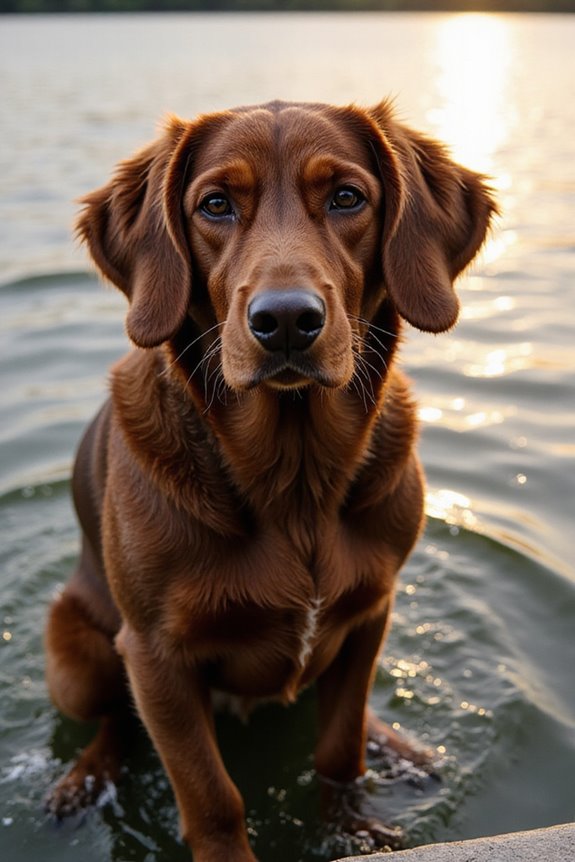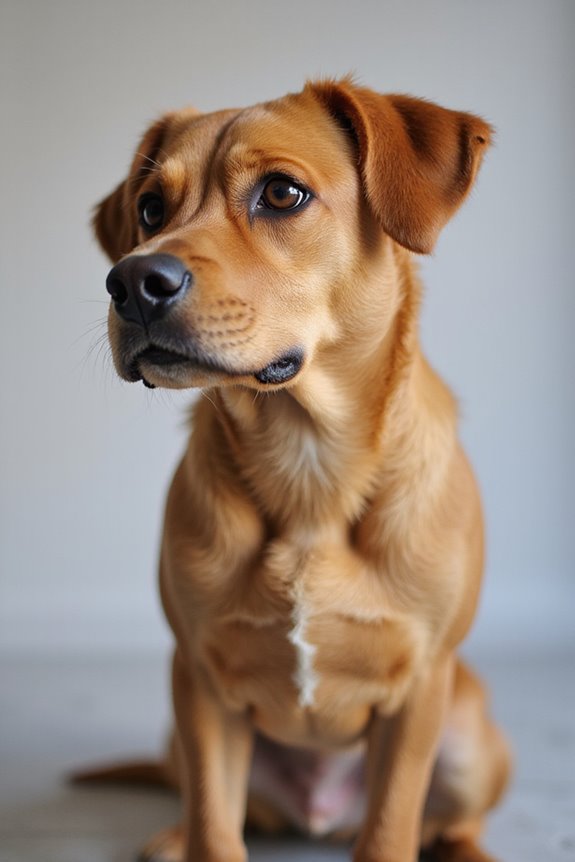If you’re looking to teach dog sports training, several resources can help. Online platforms like the Fenzi Dog Sports Academy and Karen Pryor Academy offer structured courses. Breed-specific organizations, such as the AKC and North American Flyball Association, provide tailored information based on canine traits. Additionally, educational workshops and community clubs allow hands-on experience. Moreover, printed guides and extensive training programs are available. Understanding these options will enhance your training efficacy and performance standards in dog sports.
Key Takeaways
- Fenzi Dog Sports Academy provides structured online classes across various dog sports, catering to all skill levels.
- Karen Pryor Academy specializes in clicker training and foundational obedience skills essential for dog sports.
- Dogs4Motion Academy emphasizes fitness and conditioning, crucial for preventing injuries in dog athletes.
- Breed-specific associations like AKC and NAFA focus on aligning training with breed characteristics to enhance performance in specific sports.
- Practical training tools such as clickers, treat pouches, and agility equipment aid in developing essential skills for dog sports.
Overview of Dog Sports and Their Training Needs
When considering the diverse world of dog sports, it’s vital to recognize that each sport demands a unique blend of skills and training methodologies to guarantee both safety and performance. Here’s a basic dog sport overview along with the essential training requirements:
- Agility: Focus on precise commands and obstacle navigation.
- Obedience: Build foundational skills like sit, stay, and recall.
- Flyball: Train for speed and smooth shifts in relays.
- Dock Diving: Emphasize physical conditioning and motivating jumps.
- Herding: Develop control over instincts and remote command response.
Positive reinforcement methods, such as treats and praise, are fundamental for motivation and learning. Conditioning off-leash reliability is vital for ensuring safety during these activities, highlighting the importance of early socialization and solid basic manners.
Online Training Courses and Video Resources
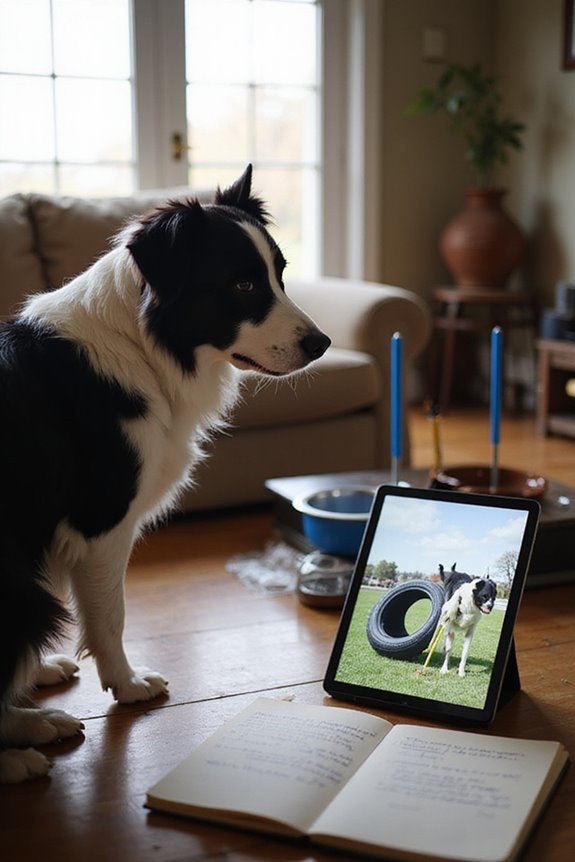
To enhance your dog’s training in various sports, a wealth of online courses and video resources is now available, allowing for flexible and thorough learning from the comfort of your home. These online platforms prioritize training accessibility, catering to all skill levels from beginners to seasoned competitors.
- Fenzi Dog Sports Academy offers structured classes in multiple disciplines, employing positive reinforcement and tailored lessons.
- Karen Pryor Academy focuses on clicker training, building foundational skills through theory and practical exercises, ideal for hobbyists and serious competitors alike.
- Dogs4Motion Academy emphasizes fitness and conditioning, supporting injury prevention and enhancing agility performance.
These resources empower you to train at your own pace, ensuring an enriching experience for both you and your dog.
Breed-Specific and Sport-Focused Associations
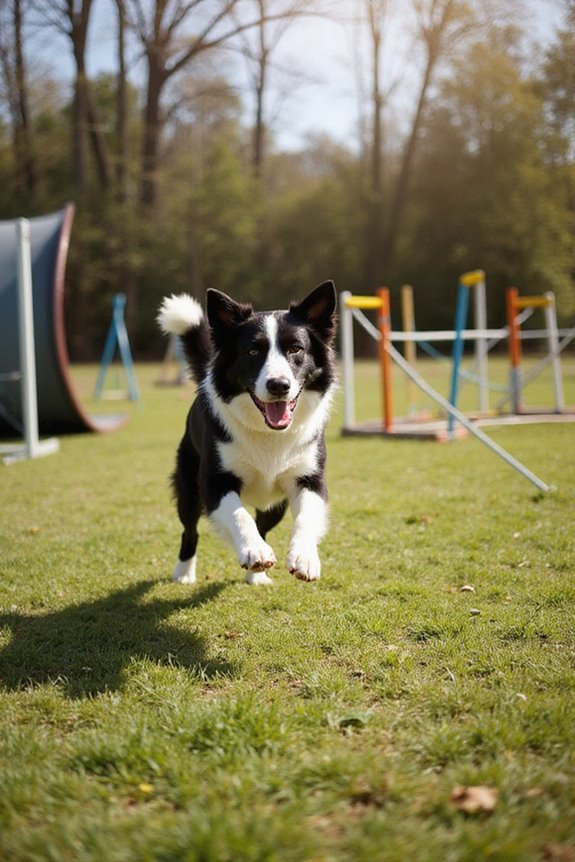
Understanding the intricacies of breed-specific and sport-focused associations is essential for any dog owner looking to enhance their pet’s training and competitive experience.
- American Kennel Club (AKC): Sanctions multiple dog sports and offers breed-specific competitions, aligning challenges with unique breed traits.
- North American Flyball Association: Encourages diverse breeds in flyball, emphasizing agility and speed, using tailored gear.
- National Association for Treibball Enthusiasts: Focuses on herding instincts, making training adaptable for various physical abilities.
- Protection Sports Associations: Emphasizes pedigree breeds through structured competition formats, addressing breed traits and skills.
Each organization plays a vital role in ensuring that training aligns with breed characteristics, motivating owners and their dogs to participate actively in their chosen sports.
Printed and PDF Guides for Structured Learning
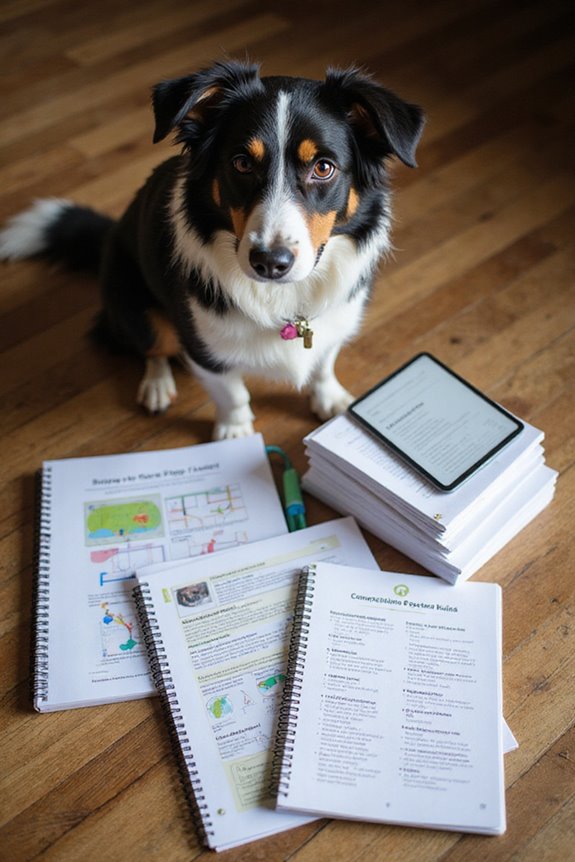
Many dog owners find that utilizing printed and PDF guides greatly enhances their structured learning experience for dog sports training. These guides serve as valuable resources, offering extensive insights into various training methodologies.
- Printed Manuals: Often, printed manuals provide foundational knowledge coupled with practical exercises, supplemented by visual aids to clarify complex concepts.
- Downloadable Guides: Many thorough online programs, like those from the Fenzi Dog Sports Academy, include downloadable guides that allow for structured, at-home training.
- Supplementary Resources: Online platforms, such as those from Non Stop Dogwear, often feature free downloadable materials that reinforce lessons through engaging content.
Incorporating these guides can greatly improve your training routines, ensuring a more effective, organized approach to dog sports.
Equipment Required for Various Dog Sports

When it comes to engaging in various dog sports, selecting the appropriate equipment is essential for successful training and competition. Understanding different equipment types guarantees you’re well-prepared. Key items include:
- Harness: For secure, neck-pressure-free control.
- Leash: A lightweight, short leash minimizes tangling.
- Agility Jumps: Adjustable heights for various skill levels.
- Tunnels: Collapsible, requiring stability supports.
- Contact Obstacles: A-frames and seesaws with traction surfaces.
- Pause Tables: Sturdy platforms for resting.
Additionally, incorporating training accessories like balance boards can enhance conditioning. Always prioritize safety features and weather resistance, guaranteeing that your equipment holds up against outdoor conditions and provides your dog with the best environment for growth and skill development.
Practical Training Tools for Skill Development
Having the right equipment is just the beginning of effective dog sports training; practical training tools play a significant role in skill development. When facing training challenges, using the right tools can make all the difference. Here are essential items to take into account:
- Positive Reinforcement Tools:
- Clickers for clear communication.
- Treat pouches for accessible rewards.
- Target sticks to refine skills.
- Weave poles to enhance coordination.
- Adjustable jumps for skill progression.
- Scent kits for odor discrimination.
- Portable crates for controlled training environments.
Educational Workshops and Community Clubs
Educational workshops and community clubs serve as essential resources for dog training and sport development, catering to both novice and experienced handlers alike. Participating in these workshops offers significant workshop benefits, such as hands-on training that enhances both skills and confidence. Community engagement is fostered through structured environments that encourage peer learning and socialization for dogs and their handlers.
Key advantages of educational workshops and community clubs include:
- Access to professional instructors who provide real-time feedback.
- Opportunities for networking and exchanging best practices.
- Regular training schedules that maintain motivation through group challenges.
- Diverse educational formats, including in-person and virtual sessions.
Incorporating these resources into your training routine can lead to improved outcomes in competitions and overall dog-handler partnerships.
Certifications and Instructor Training Programs
In pursuing a career in dog sports training, understanding certifications and instructor training programs is essential, as these credentials can greatly enhance professional qualifications.
Various programs, such as the Certification Council for Professional Dog Trainers (CCPDT) and Karen Pryor Academy, offer unique certification benefits, helping trainers adhere to high training standards. The CCPDT’s CPDT-KA and CPDT-KSA certifications require extensive industry experience and examinations covering humane, science-based practices. Similarly, the Fenzi Dog Sports Academy emphasizes skill development across different disciplines, promoting long-term knowledge acquisition.
Additionally, The Academy of Pet Careers caters to those committed to building a specialized skill set. Ultimately, pursuing these certifications provides a solid foundation for a rewarding career in dog sports training.
Safety Precautions and Health Considerations
As dog sports trainers, we must prioritize safety precautions and health factors to assure the well-being of our canine athletes. Here are essential aspects to contemplate:
- Safety Equipment: Use sturdy leashes and harnesses to maintain control. Inspect agility equipment regularly to assure stability, and adjust for the dog’s size.
- Health Monitoring: Conduct regular veterinary check-ups to confirm fitness for sports. Adjust training sessions based on the dog’s stamina to prevent overexertion.
- Warm-Up and Cool-Down: Incorporate light jogging before activities and gentle walks afterwards. Implement stretching exercises to reduce injury risks.
- Continuous Supervision: Be vigilant during training, ready to intervene if a dog appears unsteady or fatigued.
Techniques for Positive Reinforcement and Clicker Training
Positive reinforcement and clicker training are fundamental techniques that enhance the training experience for both dogs and trainers. By implementing these methods, you can foster a deeper bond with your dog while encouraging desirable behaviors.
Key Techniques:
- Clear Cues: Use distinct verbal or physical signals to prompt specific actions before you reward them.
- Immediate Rewards: Deliver treats or praise immediately after the correct behavior to reinforce connections.
- Transition Rewards: Gradually shift from food rewards to verbal praise or play to avoid dependency.
- Use Clickers: Pair a click sound with a reward to mark behaviors, enhancing timing and clarity of communication.
- Consistency is Key: Regularly reward good behaviors to reinforce learning and maintain motivation.
Adopting these strategies will elevate your training sessions effectively.
Frequently Asked Questions
How Do I Choose the Right Sport for My Dog?
When choosing a sport for my dog, I consider breed suitability and sport type compatibility. It’s essential to match their energy, instincts, and abilities to guarantee we have fun and connect deeply during training.
What Age Is Best to Start Dog Sports Training?
Did you know that puppies are most receptive to training at just 8 weeks old? For dog sports, a careful training timeline helps guarantee puppy readiness—start gently at 8 weeks, and fully engage when they mature.
Can Any Dog Participate in Dog Sports?
Absolutely, any dog can participate in sports! However, I’ve learned that considering dog breed suitability and their activity level is key to ensuring they’re happy and thriving while training and competing together.
How Can I Track My Dog’s Progress in Training?
Tracking my dog’s progress in training’s been so rewarding. I use progress journals to note milestones and improvements, celebrating every achievement together. It’s amazing how these small records can motivate and deepen our bond.
What Are Common Mistakes to Avoid in Dog Sports Training?
You might think training’s simple, but avoiding training pitfalls is essential. Many dogs experience performance anxiety when rushed. I’ve learned that consistency, patience, and focusing on basics greatly boost our teamwork and overall enjoyment.



